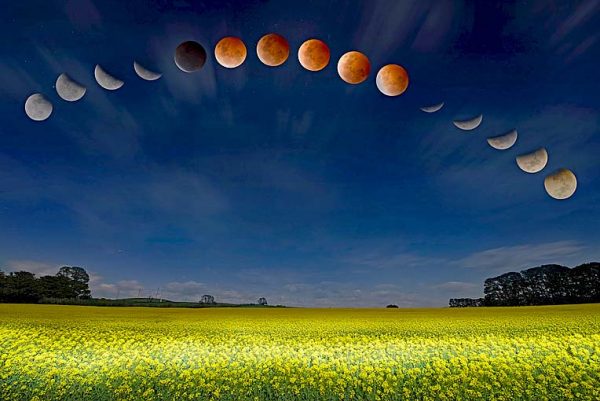

TIME to step outside and look up because a total lunar eclipse will be visible to residents in the South East next Wednesday night.
The rare sight can best be described as a “super blue-blood moon” and will be the first of its kind in 152 years.
Renowned South East photographer Ockert le Roux has captured a variety of eclipse events over the years and encouraged residents not to miss this historical event.
“In Mount Gambier and surrounds we are extremely lucky to have a front row seat to this incredible event,” he said.
“To observe the eclipse is easy, all you need to know is when and where to look out for it.”
The eclipse is set to start at 9.21pm as the moon climbs through the eastern horizon after dark, the maximum of the eclipse will be at 11.59pm, and by 2.38am it will be complete.
Mr Le Roux said the first two hours of the eclipse was quite uneventful, but at around 11.21pm the moon will start to turn red.
“Africa and most of South America won’t see the eclipse at all and people in Asia and Europe will see part of it,” he said.
“In the eastern parts of Australia we are lucky to see the full eclipse, weather permitting of course.”
As one of the region’s leading photographers, Mr Le Roux is often approached by other artists in the area who seek his advice for various projects.
In the lead up to next week’s event he has provided those interested with an in depth “how to” on shooting the eclipse on his website.
He said photographing the subject was challenging and complex.
“Photographing a lunar eclipse requires quite good knowledge of your equipment and high technical skills to achieve a good outcome,” he said.
“You can obtain reasonably good results with most hardware and cameras if you put a bit of effort into your preparation.”
Mr Le Roux described the term super blue-blood moon in detail in his online guide.
“The term ‘super’ relates to when the full moon is closest to Earth in its annual orbit, it makes its appearance about 7pc bigger than usual,” he said.
“It is also the second full moon during the same month, which is otherwise known as the ‘blue moon’, hence the expression ‘once in a blue moon’.
“When the moon moves into the umbral shadow of the Earth during the eclipse it turns a deep orange to reddish colour deriving the term ‘blood moon’, the red coloured moon is the most beautiful part of a lunar eclipse.”
Cloud cover can interfere with the moon’s visibility on the night and Mr Le Roux said he was hopeful weather permits.
“In the past we have had clear skies for viewing and luck plays a significant role so we can only hope the weather will be kind to us on the night,” he said.
“If all of the photography talk sounds too technical to you, just sit back and enjoy the eclipse.”







